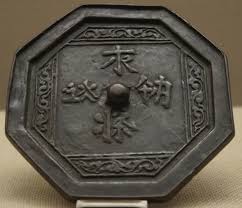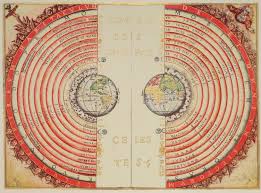The Inner Script: Do I get the part?
We started this series discussing ways that we can project qualities we feel we don’t own and how it influences our choice of partner. Both the sign on  the 2nd house and the sign on the 12th indicate what we are looking for via the Descendant. (See parts one and two: the Second house and the Twelfth house and the Double Inconjunct.)
the 2nd house and the sign on the 12th indicate what we are looking for via the Descendant. (See parts one and two: the Second house and the Twelfth house and the Double Inconjunct.)
This week, we’re going to get back to some Synastry 101 and start talking about what we do own and how it influences our choices.
A natal chart needs to be analyzed for its relationship signatures before we can compare it to another chart for compatibility. I don’t see this much talked about in astrological circles anymore, though it was once considered the most important part of a synastry. Because if what I have to offer doesn’t fit your inner pattern of what a partner is, you will not consider me as a potential mate, no matter how many inter-aspects we have between our charts. This inner script of partnership determines for us who is a potential partner and who is not. Angle contacts between charts should be considered first, particularly angle rulers conjuncting angles, (see Synastry Q & A: Angle Contacts); relationships can carry on for some time on mutual angle contacts alone. But beyond the direct stimulation of the angles, we will seek out partners who will embody and live out our ‘inner partner’ for us.
(I’m going to apologize upfront here because I haven’t had enough experience doing charts of same-sex couples to make generalizations about their synastry. I’ve done over a thousand synastries over the years, and the same-sex couples I’ve worked with number under a hundred. I have a notion of how the model works from talking to clients, but it isn’t backed up with enough research. So in discussing internal archetypes, I’m using heterosexual couples as a model. I hope to get more insight on archetypes for same-sex couples as time goes on.)
The Basics:
According to Jungian psychology, we each carry a male and a female archetype within us. This inner image of other determines who we consider as partnership material. One of the great advantages of astrology is that it provides an illustration for that archetype. We have a map that gives us a short cut to understanding our mysterious, internal ‘other half.’
Traditionally, we take a look at Moon/Venus for men and Sun/Mars for women, and add that to the sign on the Descendant and any planets there. (Planets there are often projected onto the partner.) Hard, tight aspects to Saturn and the outer planets will also effect choice, particularly conjunctions and squares. A man with Venus tightly bound up with Pluto will choose partners who will bring him intense Plutonian experiences, for better or worse. He may choose relationships that begin with intense passion, then devolve into power struggles. A woman with Sun/Uranus may find herself attracted to intellectuals or constantly involved in long-distance relationships. On the one hand, yes, the partner is teaching us more about our relationship to these planets, but on the other, this planetary placement is simply a part of who we are, and will not change. Our inner scripts are pretty much set from birth. We may choose better partners as we learn about ourselves, but our basic inclinations to partnership will not change. If a woman has Sun conjunct Pluto, she may evolve from choosing controlling partners to men who have a more positive expression of the Scorpio archetype, but the basic inclination to Pluto will remain.
Example: A man has Venus in Pisces, Moon in Capricorn. He meets a woman who is a Capricorn with Sun conjunct Neptune. Her Sun is in the sign of his Moon. Her Sun/Neptune also fits his Piscean inclinations. There are no direct aspects between the charts in the traditional sense, but it  doesn’t matter in terms of initial attraction. Whatever differences arise, he sees this woman as a natural partner. Add the fact that he has Aquarius on the Descendant and she is loaded with Aquarius planets. Even without direct aspects, his Aquarius Descendant is looking to fill the gap of ‘not I,’ which she happily supplies.
doesn’t matter in terms of initial attraction. Whatever differences arise, he sees this woman as a natural partner. Add the fact that he has Aquarius on the Descendant and she is loaded with Aquarius planets. Even without direct aspects, his Aquarius Descendant is looking to fill the gap of ‘not I,’ which she happily supplies.
The inner Script Example: A woman has Mars conjunct the Descendant. Of her male signatures, her Mars is in Pisces and her Sun is in Virgo in the 12th. The Neptune influence is strong here, but the standard gentle Piscean archetype is thrown by the very prominent Mars. Her longest and deepest relationships have been with very artistic (and ambitious) Aries men, and Mars has been prominent in nearly all of her previous relationships. This is enhanced by the fact that Mars rules her eighth house. She chooses men who live out her Mars, even though her own Mars is highly developed.
In the first example, there are no obvious aspects between charts, and yet the relationship is going the distance (so far) as the inner script is so well fulfilled. Searching for traditional ‘Venus trine Mars’ type aspects would reveal nothing about why these people are together. In the second, it would be easy to assume that the Piscean type would dominate, without understanding the importance of the Aries/Martian influence on the angle. It also illustrates the permanence of planetary influence. Even when we claim the relationship planets of the opposite sex for our own, (living out Sun/Mars for women; Moon/Venus for men) they still influence our choice of partner.
Sometimes, it works one way and not the other. You may fill my inner script, but I may not fill yours. When this happens, I think of you as partner material, and you think of me as a friend. The inner script often explains a lot about one way attractions. I may have Mars in Aquarius and the Sun in Leo in the 9th. You may be a Sag with Mars in Leo and an 11th house Moon, and I may be floored by your fire and air. However, your Moon in Cancer and Venus in Virgo may have nothing to do with my planets or placements. I will see you as a potential partner, but you will not see me that way. These basic signatures need to be looked at before we begin looking at interaspects.
Of the relationship pairings, the Moon is the more primal and Venus more easily acknowledged. Of the male signatures, Mars is more primal than the Sun. It is easier for these primal planets to be projected onto others, whereas Venus and the Sun are primarily about taste. The woman with the 12th house Virgo Sun may have the Piscean/Martian archetype dominant and may not as a whole, go for Virgo men, but neither will she be attracted to a guy who’s always got ketchup running down his shirt.
As women get older, their relationship to their Sun changes. The more they live their Sun (particularly after age 36 and the third Jupiter return), the less dominant it becomes as an attraction factor. As men get older, their relationship to their Moon changes –they become more nurturing (and self-nurturing) after the Uranus opposition, which comes somewhere around the same time as the half-way point of the second progressed lunar return (very roughly speaking, depending on the orbit of Uranus). It becomes less likely that we will project father/mother issues onto our partners, or expect our partners to live out some unlived part of ourselves.
Traditional astrology will not tell you that houses matter for the relationship planets. They do, particularly for the Sun. House position isn’t as strong as sign, but they do have influence over choices. The solar energy is notoriously difficult to pinpoint (see my series on Solar Fire, August), so the house it finds itself in colours our perception of the Sun, giving us something to grab on to. A fourth house Sun puts its energy into fourth house matters, making it more Cancerian, even if the sign is Sag. If a woman has her Mars in Cancer, a man with a fourth house Sun may fit the bill (depending on the rest of the chart). If I’m a man with my Moon in the fifth house and Venus in the eighth, I will most likely be attracted to women who give off a sexual vibe in one way or another and who are not afraid to express themselves creatively or sexually. (The fifth house rules the type of relationships that are more casual than those we find in the seventh. We learn how to express ourselves in relationship there.)
There are a number of areas that traditional astrology does not cover in synastry, and that is what we will be exploring here over the next weeks.
We all learn early on that Sun/Moon is one type of pairing of opposites, Venus/Mars another. However, Saturn plays an enormous role in relationships, particularly as we mature. One of the things we will be discussing is the importance of Saturn as a relationship planet—not just as relationship ‘glue’, but as a basic function of relationship itself. (Saturn is exalted in Libra for a reason.) In particular, we’ll be discussing the fact that male sexuality/identity is more complex than it’s given credit for.
Upcoming articles will cover synastry contacts with the Nodes of the Moon, and Chiron and its role in healing through relationship and the inner script
But next week, Saturn…

the notion that Mars and the Moon are more primal and instinctual than the Sun and Venus seems very accurate and useful.
Mars is the hunter and its activity produces sustenance for the Moon – desire and hunger adhere to both . the “scripts” that are held by the 1 st and 4 th houses – Mars and the Moon – are perhaps more entrenched and can be impediments to true relating where we can see the other for who he or she really is – instead of who we want them to be…..
Yes, Moon issues and Mars issues are messier to deal with, frankly, for both sexes. There is a lot of projection for a start. There is a tendency for both sexes to see the partner as ‘mother’ and expect needs to be instantly fulfilled. Both sexes also project Mars. Passive aggressive behaviour is one product of projected Mars, for example. It’s more difficult for the primal planets to own their own behaviour, whereas there is a more rational approach where the Sun and Venus are concerned.
I’ve always been very curious how–as a gay man–to read the Venus/Moon or Mars/Sun combos in my chart to point to potential partner or what I am attracted to.
Any insight as to which takes precedence? I’ve always found those Jungian anima/animus archetypes limiting and old fashioned because I don’t know if I exist in that sort of dialectic (can you tell I’m an Aquarius?).
My moon is in Cancer so it’s very strong in my chart. My Venus and Mars have equal parts good and bad aspects and I have a 7th house sun. I often feel my chart is such a jumble I can’t quite get a good picture of what I should look for in a partner.
Hi Alejandro,
There’s no doubt that same sex relationships are a lot more complex in their interactions. You still have the same Moon/Venus/Mars/Sun dynamic, but it seems that it can shift from partner to partner and can shift from day to day within a relationship. Usually in any chart there are are planets that are dominant by sign, house and number of aspects. That planet would carry the overall signature, but it can change. Gay and bi-sexual people tend to identify more with all of the relationship planets, and the emphasis shifts depending on who you are with. One person may make you relate more in a Moon/Venus way, and another will emphasize your Sun/Mars. It’s interesting that Uranus is your ruling planet, as it tends to neutralize the sexual divide, making you more liable to relate to both sides of the archetypes.
Some things are universal, however. We all need partners who feed our lunar needs, no matter the sex. Your Cancer Moon requires nurturing, and you need to nurture in return. The sign on the cusp of the Descendant also tells us a great deal about what to look for in a partner–you may not necessarily be attracted to the sign itself (sometimes we are put off by our Descendants), but the qualities associated with that sign. Also, take a look at the house the Descendant ruler falls in, which will say a lot about what you require of a partner. (For example, Desc ruler in the second house means we need a partner who values and supports us; in the 11th house, we require a partner who is social and friendly). The sign on the cusp of the 12th house often gives us clues to what qualities we tend to project onto partners, qualities we need to become aware of and own in ourselves. Our eighth houses and our eighth house rulers say a lot about how we relate sexually, and what need in order to merge with another person. It tells us about our sexual style and what we need in bed.
I think, if you look at the house factors, it will give you a better idea of what kind of person will fulfill you in a partnership. The traditional masculine/feminine archetypes are important, but they aren’t everything.
Thanks so much for the clarification. It seems very much in line with my experience. Some men do click with my more nurturing Cancerian qualities, some click with other parts of my chart. Good to know.
My 7th house ruler (Uranus) is in my Libra 3rd house. Saturn is going to be transiting there in the next couple years. Will see what sort of relationship stuff gets kicked up. Saturn can be tough, but I find the transits incredibly dependable lesson-wise.
Now, off to my chart to examine 🙂
Hi I would like to know what does it mean a synastry chart when a person has Sun in Leo and Moon in Piscis and another person has the opposite, Sun in Piscis and Moon in Leo. Besides, the fist one has Venus in Virgo opposite to Moon in Piscis, and the second one has Venus in Aquarius and Moon in Leo (also opposite). Thanks.
Hi, Vicki. I wrote an article on the conjunction of the Sun and Moon in synastry which you can find here: https://theinnerwheel.com/2009/10/29/synastry-q-a-the-marriage-of-sun-and-moon/. In this case, with each one opposed by Venus, the union will challenge the value system of the Venus individual and possible cause it to alter its preferences. Questions will arise regarding the worth of the Self and the worth of the partnership. It may open new Vistas regarding taste–what things you do and don’t like. Much depends on the houses involved. Aspects don’t work in a vacuum, but involve themselves intimately with the function of the house they are in. That polarity will be emphasized.
Hello Dawn..!!
This article was really eye-opening for me. I have Saturn in 7th and I was once so much into someone who had an exact Sun conjunct Saturn and a virgo stellium.. We didn’t gel in the long term because I am mostly fire.
But I have one question.
I am very much attracted to Plutonian types too…in fact every guy I have been with has had more than average Pluto signatures( even that guy had sun-saturn in Scorpio).. But I have absolutely no other water planet in my chart..my pluto aspects poorly . Pluto in scorpio/4th is my ONLY water planet.
So do you think we are looking for qualities in people who play out our Singleton planets too?? Does it override the Descendant attraction? How would you explain them to be different??
One of the great truths in synastry is that, if we are missing an element in the chart, we are going to be attracted to those who embody that missing element. And the sad fact is that, even if we are attracted to them, we have a hard time getting along with them because we don’t ‘get’ them. Our soul is trying to understand that element via this other person, but it’s very difficult, and often both parties end up hurt and misunderstood.
The IC is a mysterious point and the 4th house a mysterious place. It represents what we hide from the world but it can also represent what we hide from ourselves. We have strong attractions to people who embody our 4th houses, especially because the 4th is where our personal power resides. You would attract Plutonian types in order to test and explore your own sense of power. Please read the articles I’ve written on the MC and Saturn as a Relationship planet in order to understand the 4/10 question in synastry.